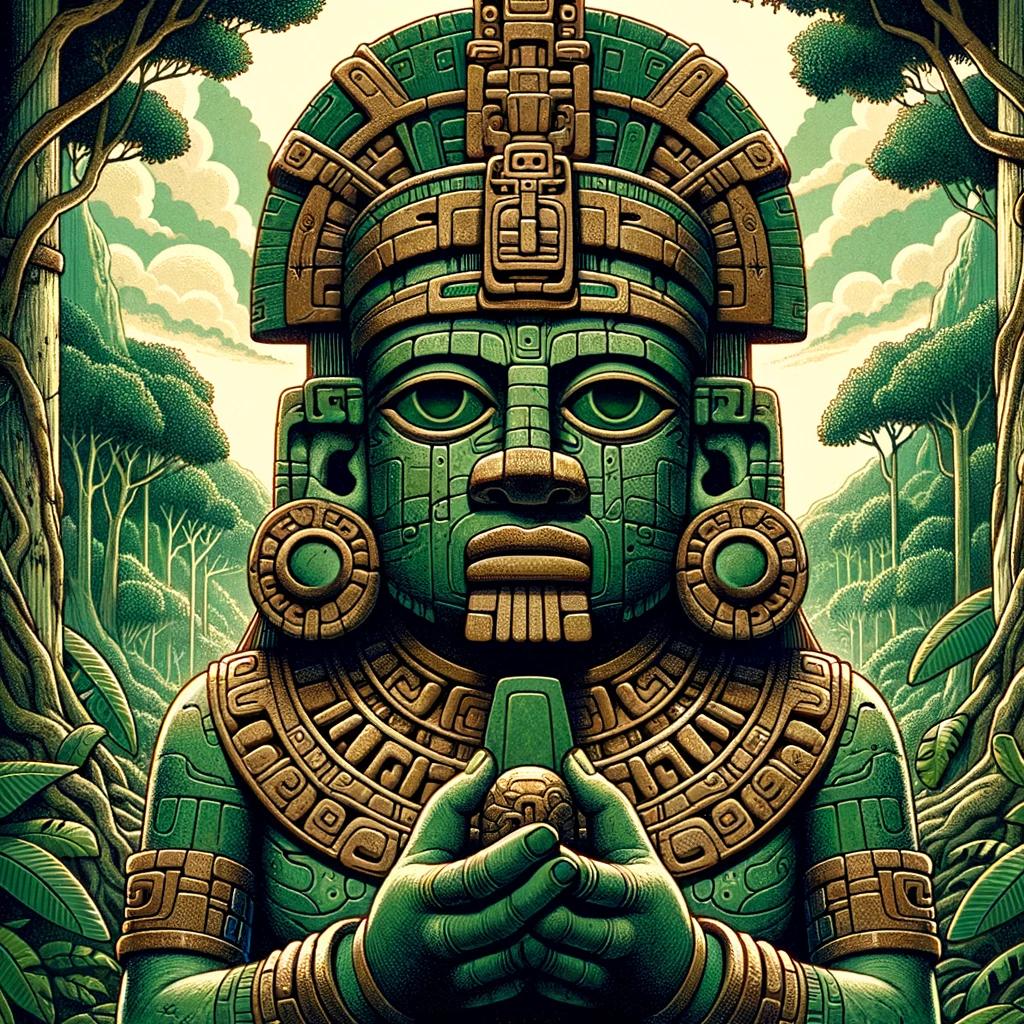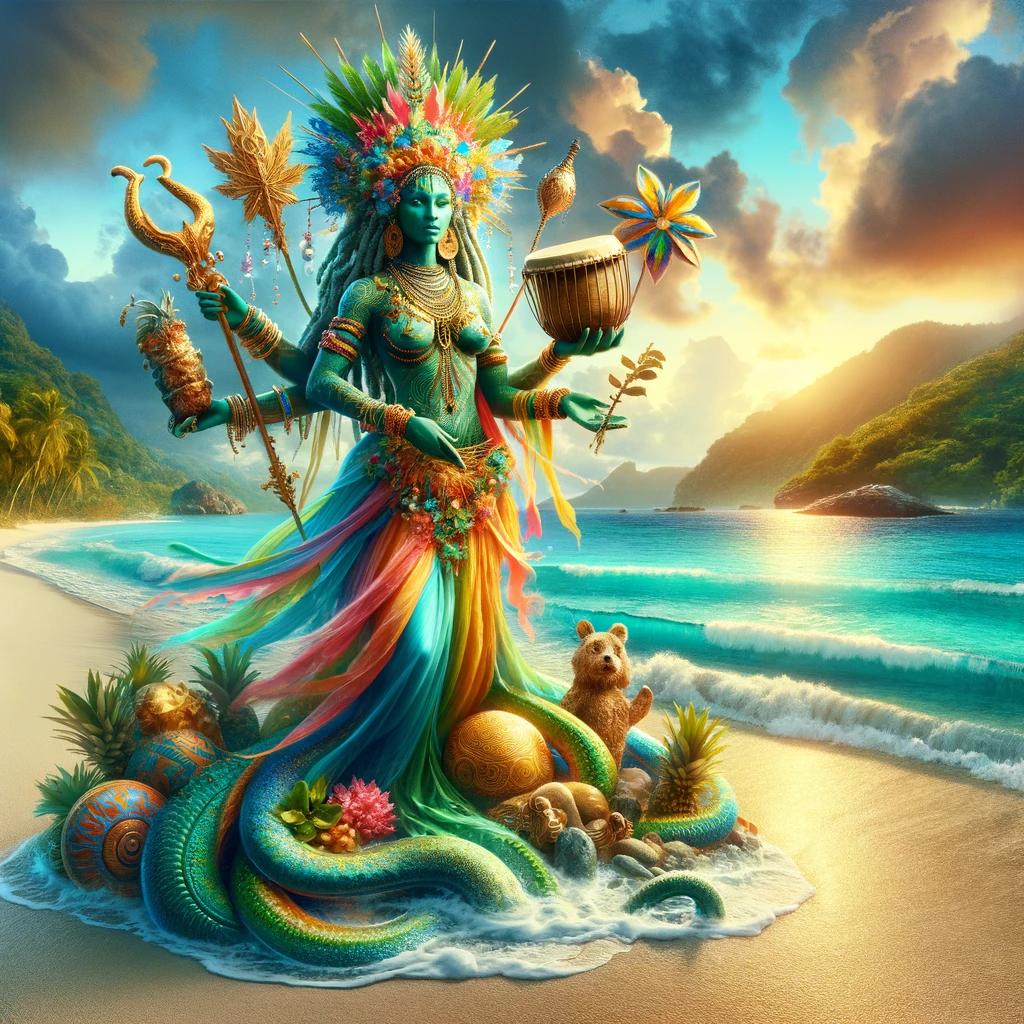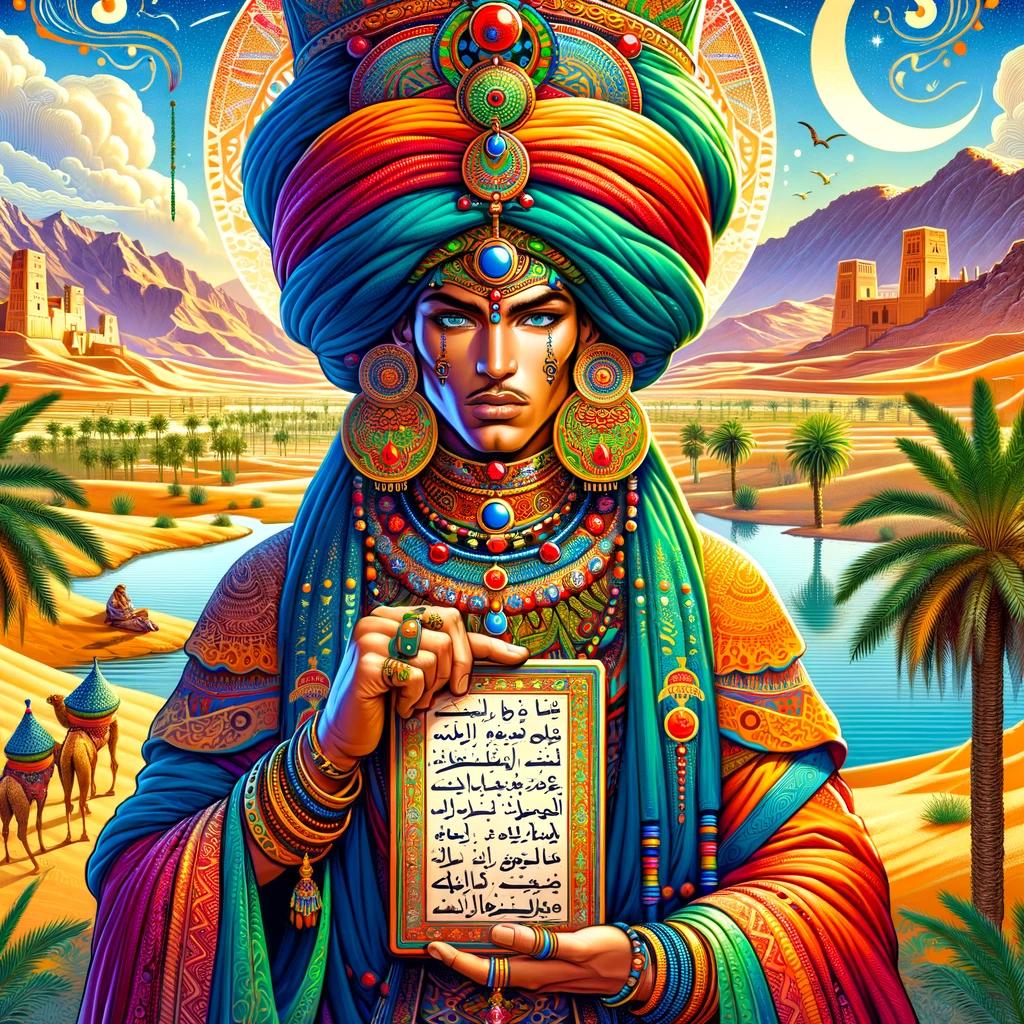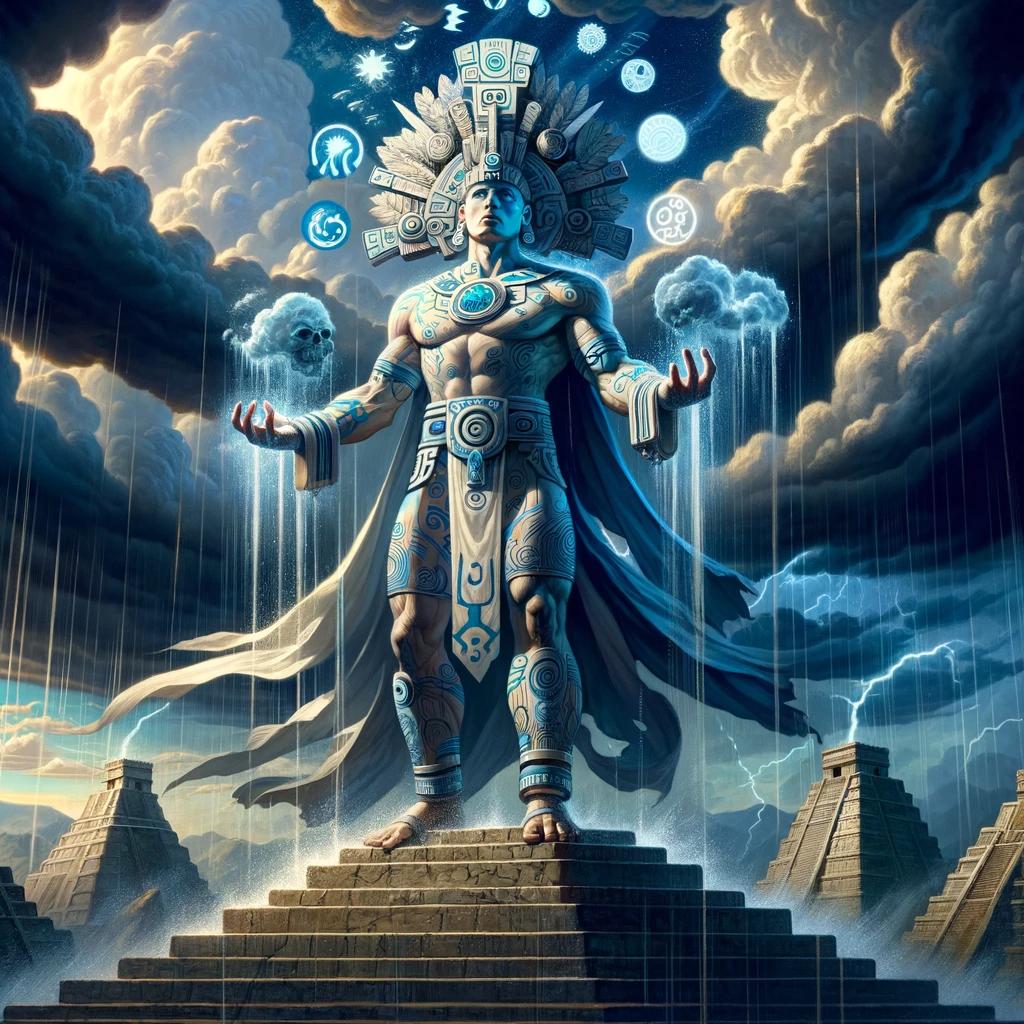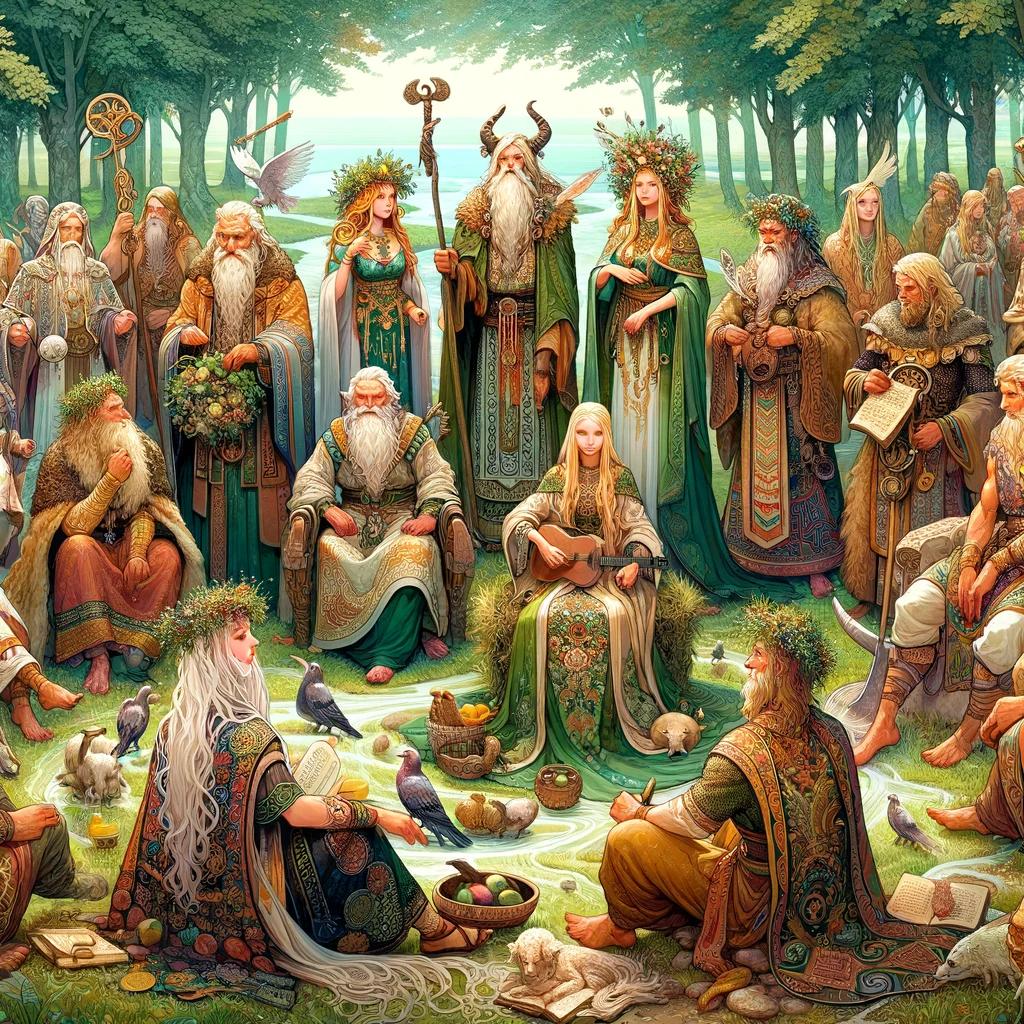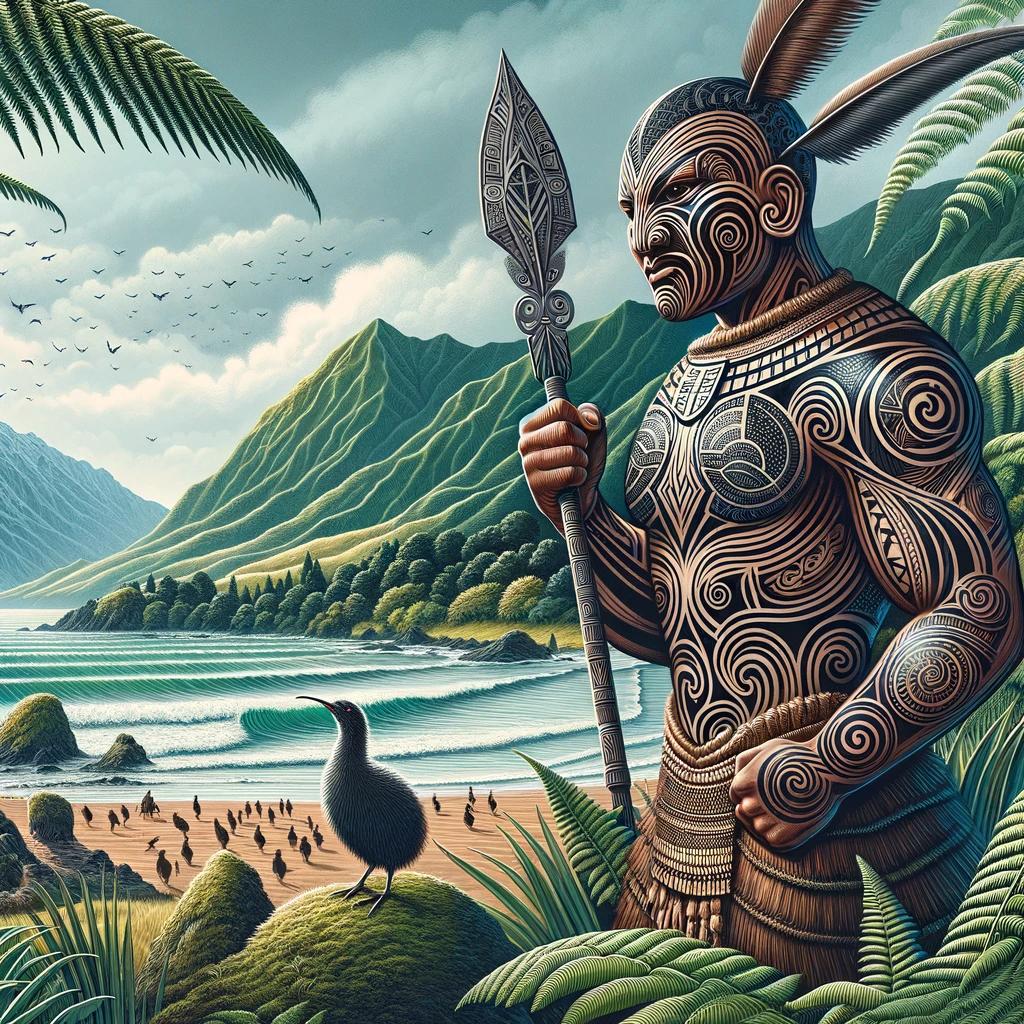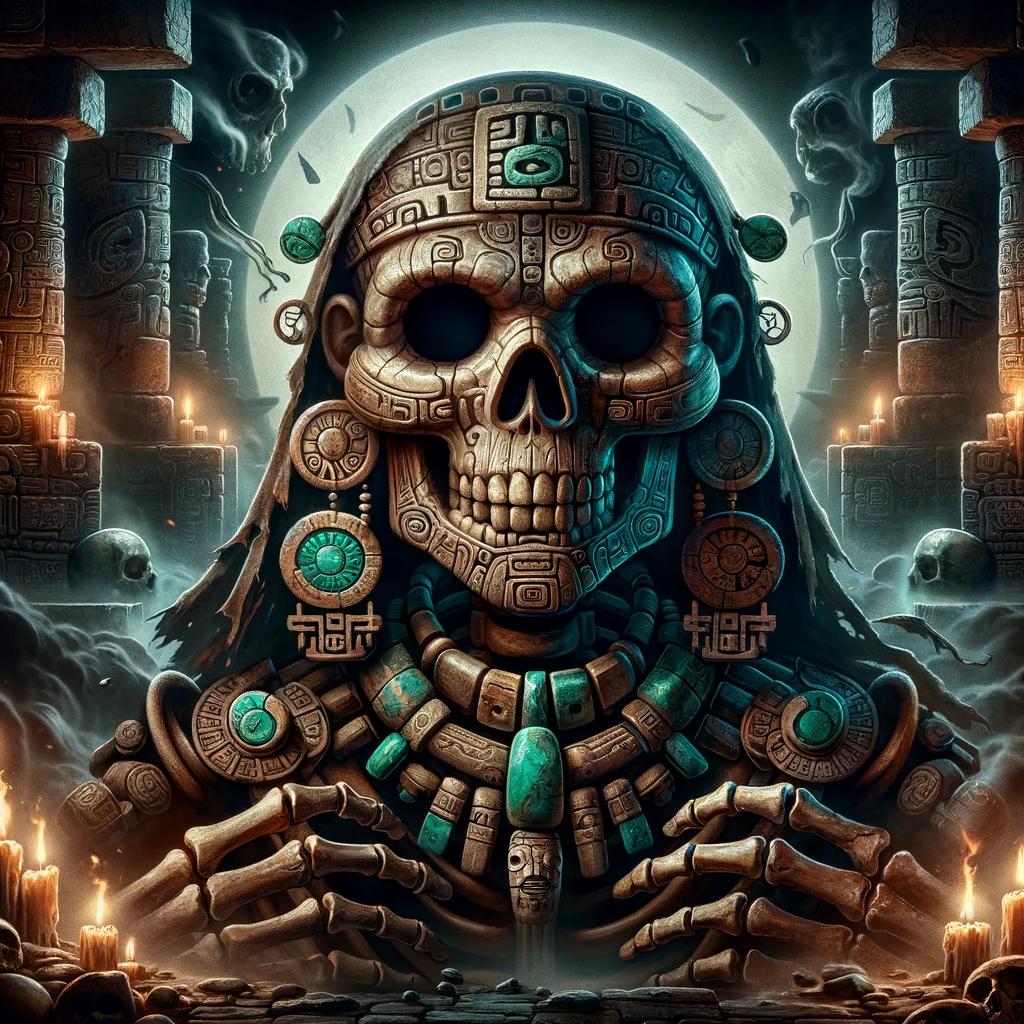Olmec Religion and Mythology
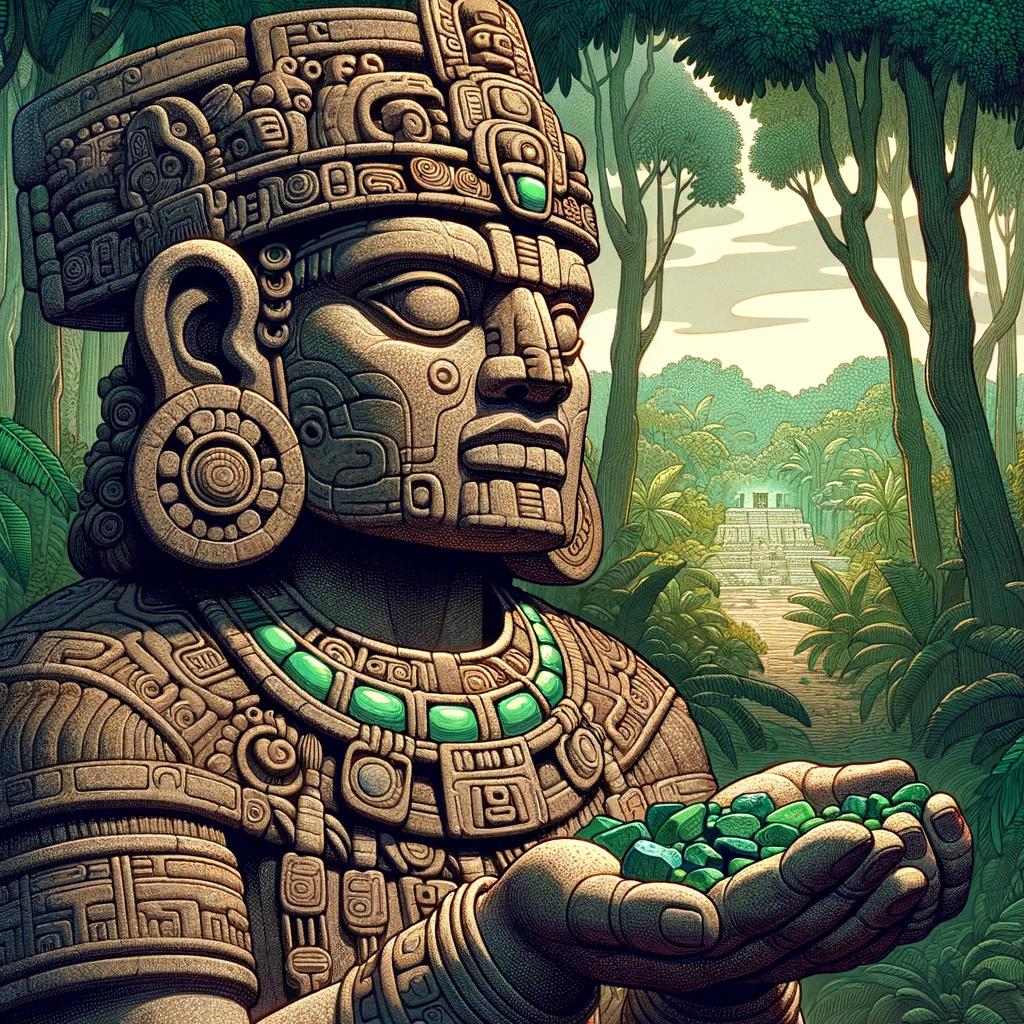
The Olmec gods and goddesses formed a significant part of the ancient Mesoamerican civilization. These divine beings were worshipped by the Olmec people, who believed in a rich pantheon of deities, including pivotal figures such as the Olmec sun god, a symbol of celestial power and life, and the feathered serpent, representing fertility and creation.
Olmec religion included a complex array of deities, with scholars identifying numerous gods, each playing a vital role in Olmec society.
The gods and goddesses held various roles, from primordial progenitors to cultural heroes, symbolizing fertility, celestial powers, and protection. Their religious practices and beliefs, although still partially unknown, played a central role in the Olmec society, influencing their daily lives and ceremonial practices.
This article explores the diverse range of Olmec gods and goddesses, shedding light on their significance and influence within their culture, including the Olmec creation story and the worship of iconic deities such as the were-jaguar and the water god.
The Olmec Civilization: An Overview
The Olmec civilization, renowned as the first Mesoamerican civilization, emerged with a distinctive culture that left a lasting impact on the region and later civilizations such as the Aztecs. Understanding the origins and development of the Olmec culture provides valuable insights into its significance within ancient Mesoamerican history.
Origins and Development of the Olmec Culture
The exact origins of the Olmec civilization remain shrouded in mystery, but archaeological evidence points to their emergence around 1500 BCE in the lowlands of what is now southern Mexico.
The Olmec people, known for their advanced agriculture and irrigation systems, inhabited a region marked by abundant natural resources, including fertile land along river valleys.
The development of the Olmec culture was characterized by the rise of complex societies, evident in their establishment of settlements and the construction of monumental architecture.
The Olmec made significant advancements in agriculture, developing intricate irrigation systems and cultivating crops such as maize, beans, and squash, which formed the basis of their subsistence.
Key Characteristics of the Olmec Civilization
The Olmec civilization was distinguished by several key characteristics that defined its cultural and societal framework.
Their monumental architectural achievements, including the construction of ceremonial centers and structures, showcased their advanced engineering skills.
Art played a vital role in Olmec society, as evident in their distinctive sculptures and other artistic expressions.
The Olmec sculptors created large stone heads depicting rulers with intricate details, representing the elite and their authority.
The Olmec also possessed a system of writing, though it remains undeciphered.
This early form of writing, employing symbols and glyphs, suggests the Olmec’s intellectual and cultural sophistication.
Influence of the Olmec on Mesoamerican Cultures
The Olmec civilization had a profound influence on subsequent Mesoamerican cultures including the Maya and Aztecs.
Their cultural, artistic, and religious motifs served as a foundation for future civilizations.
The Olmec’s legacy can be seen in the adoption of their architectural styles, artistic symbolism, and religious practices by later societies such as the Maya and Aztecs.
Among the myriad of deities, the Olmec religion gods included figures such as the bird monster, the fish monster, the were-jaguar, and the eye god, showcasing the Olmecs’ rich mythological landscape and their belief in the supernatural forces governing the natural world.
Let’s delve into some of the prominent deities:
Primordial Deities: The First Mother and Father
The Olmec creation myth centered around the worship of the First Mother and Father, who were revered as the progenitors of humanity and precursors to deities like the Maize God and the Water God.
They embodied the essence of life, fertility, and the natural world, laying the groundwork for the complex pantheon that included figures like the Feathered Serpent and the Banded Eye God.
Cultural Heroes: Hunahpu and Xbalanque
Hunahpu and Xbalanque were revered as cultural heroes among the Olmec people.
Associated with the Mesoamerican ballgame, they symbolized bravery, skill, and cultural development. Their adventures brought them into contact with various entities, including the Bird Monster and the Jaguar God, reflecting their significance in the mythological narrative shared by cultures like the Aztec and Maya.
The Maize God: Symbol of Fertility and Prosperity
The deity known as the Maize God played a pivotal role in Olmec culture, representing the vital importance of maize as a staple crop. This deity symbolized fertility, abundance, and prosperity, and was often depicted alongside other important figures such as the Water God, illustrating the interconnectedness of agricultural prosperity and natural elements.
The Jaguar Sun God: Fusion of Solar and Jaguar Energies
Combining the power of the sun and the mystical allure of the jaguar, the Jaguar Sun God was a symbol of strength, divinity, and protection within the Olmec belief system. This deity, closely associated with the Were-Jaguar, underscored the Olmec’s reverence for jaguar motifs and their significance in religious iconography.
Itzam-Yeh: The Celestial Bird Deity
Itzam-Yeh, also known as the Celestial Bird Deity, represented the celestial powers and was associated with sustenance and agricultural abundance. This divine figure, along with the Bird Monster, played a significant role in Olmec spiritual practices, symbolizing the importance of avian creatures in their cosmology.
Ix Chel: The Rainbow Lady of Fertility and Medicine
Ix Chel, also referred to as the Rainbow Lady, held great importance as a goddess of fertility, medicine, and the arts. She was believed to possess healing powers and was associated with the vibrant colors of the rainbow, embodying the life-giving qualities of water, akin to the roles of the Water God and other aquatic deities like the Fish Monster.
Rain God and Cosmic Monster: Guardians of Water and Fertility
The Rain God, in conjunction with entities like the Shark Monster and the Olmec Dragon, were revered as protective deities associated with rainfall and fertility. The Rain God ensured agricultural prosperity by controlling the water cycles, while the Cosmic Monster represented the harmonious balance of natural forces, integral to the well-being of the community.
Other Deities: Bird God, Baby Jaguar, and Human-Feline Figure
Within the Olmec society, rituals and ceremonies played a significant role in honoring and communicating with the gods and goddesses. These practices shed light on the complexities of Olmec religious customs and their reverence for the divine, including the first major deities of their culture and those inherited by subsequent civilizations like the Aztec and Maya.
Rituals and Ceremonies: Insights into Olmec Religious Practices
The Olmec people engaged in a wide range of rituals and ceremonies to establish a connection with their deities. These rituals often involved offerings, such as food, pottery, and precious objects, to demonstrate devotion and seek the favor of gods like the Maize God and Feathered Serpent.
Sacred spaces, including temples and sacred springs, served as the backdrop for these ceremonies. Elaborate processions and dances were performed as acts of worship, with the intention of maintaining harmonious relationships with the divine realm.
Shamanism and Divination: Communicating with the Divine
Shamanism played a significant role in Olmec spiritual practices, as shamans acted as intermediaries between the human and spirit worlds. Through rituals and trance-like states, they communicated with the gods and goddesses, seeking guidance, healing, and divination.
Shamanic practices involved the use of hallucinogenic substances, such as peyote, to induce altered states of consciousness and facilitate spiritual connections, bridging the gap between the natural and supernatural worlds.
Sacred Sites and Temples: Centers of Worship
Sacred sites held immense importance in the religious beliefs of the Olmec.
Temples and pyramids were constructed as physical representations of their spiritual connection with the divine. These monumental structures were often located in strategic positions, such as high points or near significant natural features, symbolizing the Olmec’s desire to be close to the gods.
Among the deities worshipped at these sites, the Were-Jaguar and the Bird Monster were particularly venerated.
These sacred spaces served as centers of worship and pilgrimage, where rituals, ceremonies, and offerings took place, often in honor of the numerous gods identified in Olmec mythology, such as the Maize God and the Feathered Serpent.
Art and Iconography: Depicting the Olmec Deities
The art and iconography of the Olmec civilization provide significant insights into the portrayal of gods and goddesses in their religious beliefs. The Olmec people expressed their reverence and worship through various forms of artistic expression, including sculptures, monuments, and symbols.
These depictions not only illustrate the ancient Olmec’s religious practices but also their deep connection to their gods.
Olmec Sculptures and Monuments: Portrayals of Gods and Goddesses
Olmec sculptures, particularly the colossal stone heads, are among the most iconic representations of the Olmec deities. These massive stone carvings depict powerful and awe-inspiring divine figures, often displaying distinct features and attributes associated with specific gods and goddesses, such as the Water God and the Fish Monster.
The Olmec artists skillfully crafted these sculptures to convey the divine power and presence of the deities. Additionally, other sculptural works, such as small figurines and reliefs, also depict various Olmec gods and goddesses, each telling a story of the Olmec’s complex pantheon.
Symbols and Imagery: Decoding the Meanings in Olmec Art
The Olmec art and iconography are rich in symbols and imagery that hold significant cultural and religious meanings. Certain recurring symbols and motifs found in Olmec art are believed to represent specific deities and their associated powers or domains, including the Feathered Serpent, a symbol of celestial power and transformation.
Deciphering the intricate symbolism and imagery in Olmec art allows researchers to gain a deeper understanding of the religious beliefs, cosmology, and spiritual worldview of the Olmec people.
Olmec Influence on Later Mesoamerican Cultures
The impact of the Olmec religion extended beyond their own civilization, leaving a lasting legacy in the beliefs and practices of later Mesoamerican cultures.
Legacy of the Olmec Religion: Continuity in Mesoamerican Beliefs
The Olmec gods and goddesses influenced the religious framework and mythologies of subsequent civilizations in Mesoamerica, including the Mayans and Aztecs. The legacy of key figures such as the Maize God and the concepts embodied by the Were-Jaguar have persisted throughout Mesoamerican history.
Comparisons with Mayan and Aztec Religions: Similarities and Differences
Despite the evolution of Mesoamerican religious beliefs over time, parallels can be drawn between the Olmec gods and those worshipped by the Mayans and Aztecs. Certain deities, such as the Maize God, Jaguar symbolism, and the concept of celestial powers, have striking resemblances across these civilizations.
However, differences in specific names, attributes, and regional variations also highlight the distinctive nature of each culture’s religious traditions.
Unanswered Questions and Ongoing Research
As we delve into the fascinating world of Olmec gods and goddesses, there are still many unanswered questions that continue to pique the curiosity of researchers. Exploring the gaps in our understanding of Olmec religious knowledge opens up avenues for ongoing research and discovery.
Unsolved Mysteries: Gaps in Olmec Religious Knowledge
Despite our best efforts, numerous aspects of Olmec religious practices and beliefs remain shrouded in mystery. Scholars still grapple with deciphering the intricacies of their rituals, ceremonial practices, and the full extent of their pantheon.
The following questions and enigmas persist:
- The precise nature and meaning of specific religious ceremonies and rituals.
- The significance and symbolism behind certain artifacts and iconography.
- How the Olmec deities were invoked and worshipped in everyday life.
Current Studies and Discoveries: Advancing Understanding of Olmec Deities
Contemporary research endeavors are shedding new light on the Olmec gods and goddesses, gradually unraveling the intricacies of their religious system.
Recent studies and discoveries have provided valuable insights into:
- The role of Olmec deities within broader Mesoamerican cosmology.
- The connections between Olmec religion and other contemporary civilizations.
- The potential influence of Olmec religious practices on later Mesoamerican cultures.
Future Directions: Exploring Further Connections and Influences
Looking ahead, the exploration of the Olmec gods and goddesses opens avenues for multidisciplinary research and potentially fruitful collaborations.
Here are some enticing prospects that researchers are keen to explore:
- Comparative studies between Olmec religious beliefs and those of other Mesoamerican civilizations.
- The impact of Olmec religious practices on later indigenous cultures in the Americas.
- Using new technologies and techniques to analyze and interpret existing Olmec artifacts for deeper insights into their religious symbolism.
.
.

